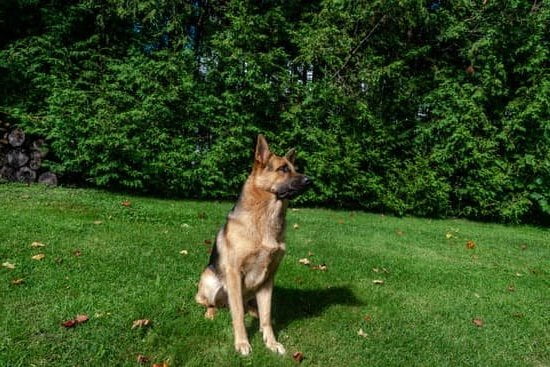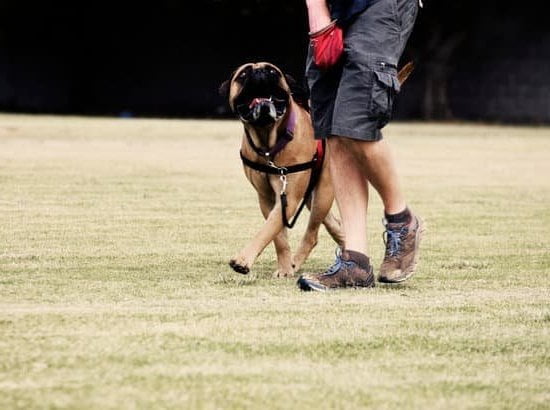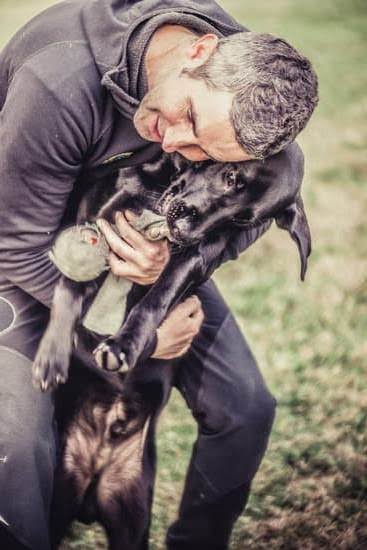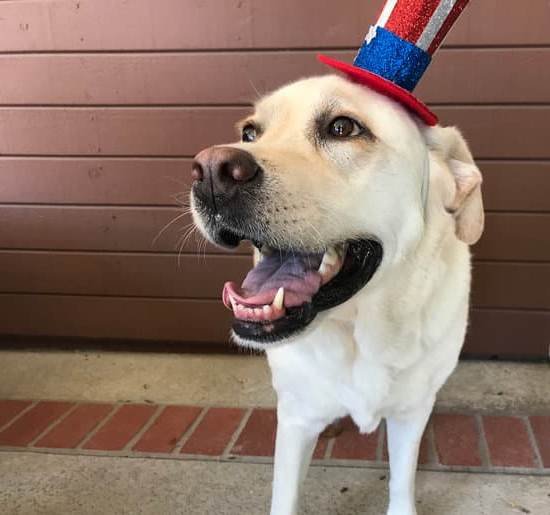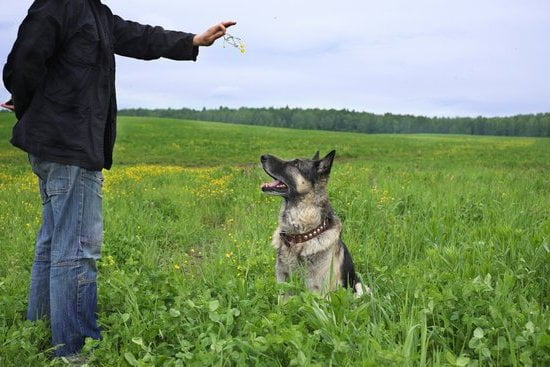Off leash dog training is an essential aspect of responsible pet ownership, allowing dogs the freedom to roam and explore while still maintaining control and obedience. In this article, we will delve into the world of off leash dog training, providing valuable insights and tips for pet owners looking to train their dogs effectively.
From understanding the benefits of off leash training to choosing the right training method, building trust and communication, and overcoming challenges, we will cover all aspects of this important training technique.
The first step in off leash dog training is to understand why it is crucial for your canine companion. Not only does it provide physical exercise and mental stimulation for your dog, but it also fosters a strong bond between you and your pet. With the right approach, off leash training can enhance your dog’s obedience and overall behavior while allowing them the freedom to enjoy their surroundings.
As we explore various off leash training techniques and methods, we will also discuss the importance of consistency in enforcing commands and expectations. Building trust and effective communication with your dog are key components of successful off leash training efforts, ensuring that they respond reliably in different environments and situations. By implementing safety measures and practicing in diverse settings, you can celebrate progress in your dog’s off leash training journey while keeping them safe at all times.
Choosing the Right Training Method
Positive Reinforcement Training
One of the most popular and effective off leash dog training techniques is positive reinforcement. This method involves rewarding your dog with treats, praise, or toys when they exhibit the desired behavior. By using positive reinforcement, you can encourage your dog to follow commands and stay focused during off leash training sessions. It also helps build a strong bond between you and your dog as they come to associate obedience with positive experiences.
Clicker Training
Clicker training is another valuable tool for off leash dog training. It involves using a small device that makes a clicking sound to mark the exact moment when your dog performs a desired behavior. This clear signal helps communicate to your dog that they have done something right, making it easier for them to understand what is expected of them. Clicker training can be particularly effective in teaching more complex commands and behaviors during off leash training.
Lure-Reward Training
Lure-reward training involves using food or toys to lure your dog into performing a specific action or behavior. Once your dog follows the lure and exhibits the desired behavior, they are rewarded with the treat or toy.
This technique can be especially useful for teaching your dog to respond to off leash commands such as “come” or “stay”. Lure-reward training can help keep your dog engaged and motivated during off leash training sessions, making it an effective method for many dogs.
When choosing the right training method for off leash training, it’s important to consider your dog’s personality, temperament, and individual needs. Experimenting with different techniques and observing how your dog responds can help you determine which approach is the best fit. Remember that every dog is unique, so be patient and adaptable as you find the most effective method for your furry companion.
Building Trust and Communication
Off leash dog training is more than just teaching your dog to walk or run without a leash. It requires establishing a strong bond and effective communication with your pet. Building trust is crucial in ensuring the success of off leash training for your dog. By creating a connection based on trust and understanding, you can effectively train your dog to respond to commands and stay focused even when not on a leash.
One of the key elements in building trust with your dog is positive reinforcement. This involves rewarding good behavior with treats, praise, or affection. When your dog learns that they will be rewarded for obeying commands and staying by your side, they are more likely to continue doing so during off leash training sessions. Consistency in positive reinforcement is essential in building trust and reinforcing good behavior.
Effective communication is also vital in off leash dog training. This means being able to understand your dog’s body language and signals, as well as using clear verbal cues and commands. Using consistent body language alongside verbal cues can help your dog better understand what is expected of them during off leash training sessions.
| Trust-Building Techniques | Effective Communication Methods |
|---|---|
| Positive reinforcement through treats, praise, and affection | Understanding body language and signals from the dog |
| Consistency in positive reinforcement | Using clear verbal cues and commands |
Consistency Is Key
Off leash dog training requires a consistent and structured approach in order to be successful. Here are some key points to keep in mind when maintaining a consistent training routine for off leash training:
1. Establish a regular training schedule: Set aside specific times each day for off leash training sessions with your dog. Consistency in timing will help your dog understand and anticipate the training routine, making it easier for them to learn.
2. Use consistent commands and signals: When training your dog to be off leash, it’s important to use the same verbal commands and hand signals consistently. This helps your dog associate specific cues with certain behaviors, facilitating better communication between you and your pet.
3. Stick to one training method: While it’s important to explore different off leash training techniques, once you’ve found the method that works best for your dog, stick with it. Consistency in the training method will prevent confusion and ensure that your pet understands what is expected of them.
4. Keep up with positive reinforcement: Consistently rewarding good behavior during off leash training is crucial for reinforcing positive habits in your dog. Whether it’s through treats, praise, or playtime, positive reinforcement encourages your pet to repeat desired actions.
5. Stay patient and persistent: Consistency also involves staying patient and persistent throughout the off leash training process. Dogs may not grasp concepts immediately, so it’s important to remain dedicated and continue practicing consistently.
By maintaining a consistent training routine for off leash dog training, you can effectively reinforce behaviors and set your dog up for success in mastering obedience without a leash.
Overcoming Challenges
Training a dog to be off leash comes with its challenges and setbacks, but overcoming these obstacles is crucial for the success of your training. Here are some common challenges that you may face when working on off leash dog training, and how to address them:
1. Distractions: One of the biggest challenges in off leash training is dealing with distractions. Dogs are naturally curious and easily distracted, so it’s important to gradually expose them to different environments and distractions during training. Start in a controlled environment and slowly introduce distractions such as other dogs, people, or wildlife.
2. Recall Issues: Another common obstacle in off leash training is having a reliable recall command. Many dogs tend to ignore their owner’s calls when they are off leash, especially if they are more interested in something else. To overcome this challenge, practice recall commands regularly in different settings and use high value rewards to reinforce the behavior.
3. Fear and Anxiety: Some dogs may exhibit fear or anxiety when off leash, especially if they have had negative experiences in the past. It’s important to address these emotions by slowly building their confidence through positive reinforcement and creating a safe and secure environment for them.
Addressing these challenges requires patience, consistency, and understanding of your dog’s individual needs. With proper guidance and training techniques, you can help your dog overcome these obstacles and make progress in their off leash training journey.
Safety Measures
Off leash dog training is a great way to give your furry friend more freedom and improve their behavior. However, it’s essential to implement safety measures and precautions to ensure a safe off leash experience for your dog.
One important safety measure is to make sure your dog is up to date on vaccinations and has proper identification, such as a collar with tags or a microchip. This will help ensure that your dog can be easily identified and returned to you if they were to get lost while off leash.
Another safety measure to consider is training your dog on voice commands and recall. Teaching your dog reliable recall can prevent them from running off into dangerous situations when off leash, giving you the peace of mind that you can call them back in any situation. Additionally, it’s crucial to practice in a secure and enclosed area until you are confident in your dog’s ability to stay close by when allowed off leash.
In addition, it’s important to be aware of potential hazards in the environment where you plan on allowing your dog off-leash. Keep an eye out for wildlife, unfamiliar dogs, or other potential threats, and be ready to intervene if necessary. By being proactive about safety measures, you can ensure that both you and your furry friend have a positive and safe experience with off leash training.
| Benefit | Information |
|---|---|
| Vaccinations | Ensure up-to-date vaccinations for safety. |
| Training | Train reliable recall commands for safety. |
| Awareness | Be aware of potential hazards in the environment. |
Practicing in Different Environments
Home Environment
When training your dog to be off leash, it’s important to start in a familiar and controlled environment, such as your own home. Begin by practicing basic commands like sit, stay, and come in the comfort of your own living space. Once your dog is reliably responding to these commands indoors, you can gradually transition to practicing in your backyard or a fenced-in area.
Public Parks and Open Spaces
Training your dog to be off leash in public parks or open spaces requires a different set of skills. Start by finding a quiet park with a secure perimeter where you can practice off leash training without distractions. Gradually introduce new elements such as other people, dogs, or wildlife to simulate real-life situations. Always ensure that your dog is under control and obedient before allowing them off leash in public areas.
Hiking Trails and Nature Areas
For those who enjoy outdoor activities with their furry companions, training your dog to be off leash on hiking trails and nature areas is essential. It’s crucial to teach your dog to follow trail etiquette such as yielding to other hikers and staying close by at all times. Practice recall exercises in different terrains and environments to ensure that your dog responds reliably regardless of the surroundings.
By gradually exposing your dog to various settings and situations while practicing off leash training, you can build their confidence and obedience in any environment. Patience, consistency, and positive reinforcement are key factors in successfully training your dog to be off leash, ultimately leading to an enriching experience for both you and your furry friend.
Celebrating Success
In conclusion, off leash dog training can be a rewarding and fulfilling experience for both you and your furry companion. By understanding the benefits and importance of off leash training, choosing the right training method, and building trust and communication with your dog, you can ensure a successful off leash training journey. Consistency is key in maintaining a strong off leash training routine, while overcoming challenges and implementing safety measures are crucial for a safe and positive experience.
When celebrating success in off leash training, it’s important to recognize and reward progress in your dog’s behavior. Whether it’s through verbal praise, treats, or playtime, acknowledging your dog’s achievements will reinforce their good behavior and strengthen your bond. This not only brings joy to your dog but also fosters a sense of accomplishment for you as their trainer.
Ultimately, the freedom and joy that come with successful off leash training are unparalleled. Watching your dog enjoy their newfound independence while remaining responsive to your commands is truly gratifying. By practicing in different environments and celebrating small victories along the way, you’ll both reap the benefits of off leash training. Remember that each step forward is an achievement worth celebrating on this journey to a well-trained, happy pup who can roam freely by your side.
Frequently Asked Questions
How Do I Train My Dog to Be Off Leash?
Training your dog to be off leash requires patience, consistency, and positive reinforcement. Start in a safe, enclosed area with minimal distractions. Use treats and praise to reward your dog for staying close to you and following commands.
How Do I Transition My Dog Off the Leash?
When transitioning your dog off the leash, gradually increase the level of distraction and freedom while maintaining control through verbal commands and hand signals. Always be ready to redirect your dog’s attention if they become too focused on something else.
Is It Too Late to Train My Dog Off Leash?
It’s never too late to train your dog off leash, but it may be more challenging with older dogs who have established habits. However, with patience and consistent training, many dogs can learn to be reliable off leash regardless of their age. Remember to always prioritize safety when training a dog off leash.

Welcome to the blog! I am a professional dog trainer and have been working with dogs for many years. In this blog, I will be discussing various topics related to dog training, including tips, tricks, and advice. I hope you find this information helpful and informative. Thanks for reading!

